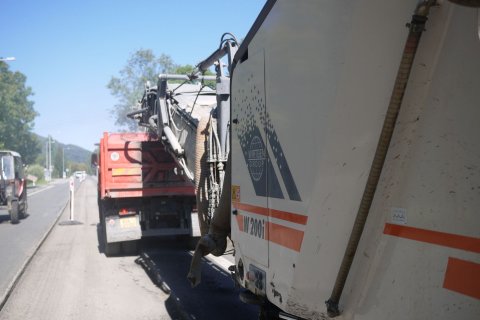TECHNOLOGY DESCRIPTION
Nowadays it is impossible to perform roadworks on highways, motorways or local communication routes without the equipment for cold milling of road surfaces. Road milling machines are used for removing old or damaged layers, particularly when it is necessary to preserve the original profile grade after laying new covering layers or if it is necessary to adjust the profile grade of the road surface due to the demands placed on it by the increasing traffic.
It is also possible to use this equipment for chipping the road surface in dangerous sections, as for levelling unevenness and deformations of the surface.
Technology of milling works:
- Milling of constant thickness;
- Milling to stipulated lateral incline;
- Smoothing of lengthwise unevenness by multipoint levelling;
- Milling according to guide rope;
- Milling according to laser sensor;
- Levelling of furrows using special fine milling drum;
- Milling of local pot holes;
- Milling of channels for engineering networks;
- Complete liquidation of communication routes and surfaces;
- Grinding of existing surfaces and keeping in place – pre-milling before cold state recycling on site;
Fine milling
Fine milling is performed using a Wirtgen miller with a coverage width of 2m with a special fine drum. The fine drum differs from standard milling machine milling drums due to its larger number of milling picks on its circuit. In this case there are 300 picks in comparison with the usual 150. This reduces the spacing in the grooving of the surface being milled. The texture of a surface milled in this manner is finer. Fine milling is suitable above all for levelling deformations of the road surface, removing soiling and correcting worn surfaces and for preparation of the surface before subsequent technologies such as hot state remix and micro-carpet, and can also be used for chipping exposed and dangerous sections of communication routes, for removing markings on the surface, on motorways, highways, local communication routes, bridges, airports and other surfaces.

 Hrvatski
Hrvatski
 FREKOMOS CZ
FREKOMOS CZ
 FREKOMOS SK
FREKOMOS SK














